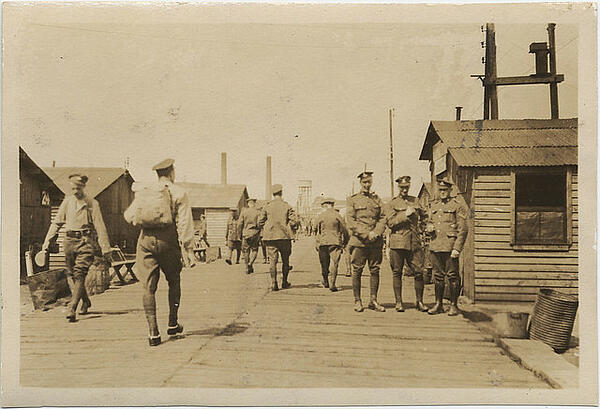Brothels and the Western Front
Brothels were a common sight near both the Allied and German fronts during World War One. As the front lines very rarely moved, brothels in some towns became a frequent destination for the soldiers, particularly as it was an accepted way of life in France and Belgium.
The brothel system mirrored that of the class system, with soldiers using ‘red lamp’ brothels and officers using ‘blue lamp’ brothels. The former often contained no more than a sheet and a stretcher, while the latter provided officers with beds, champagne and even hot meals. German brothels operated in a similar way, and when the front lines moved the British soldiers and officers used the brothels previously used by the German soldiers and officers.
The brothels were legal establishments known as ‘maisons tolérées’ and many authorise across northern France allowed them as they felt they kept the soldiers in good spirits. Every brothel was managed by a madame and all the women had to undergo regular STI tests as this was a major problem at the time.
By 1917, there were 137 legalised brothels across 35 towns in northern France, which also provided the local businesses with more custom from the soldiers. This was particularly true in Le Havre, which was one of the most successful brothel towns. A study in 1915 estimated that there were 170,000 visitors to the brothel in that year alone, although this number didn’t specify how many were individuals and how many were repeat visitors.

Senior officers in the army felt that married men were the best served by the brothels as they felt they may lose their fighting spirit without regularly sexual stimulus. The lack of faithfulness that this demonstrated was considered acceptable on the basis of ‘needs must’ as the British Army needed their men in their best condition. The only officer who did not share this belief was Lord Kitchener, who went so far as to issue a note advising British soldiers to avoid women while in France. The first members of the British Expeditionary Forces were even forbidden to talk to French women despite being given language guides.
Despite many considering brothels acceptable, the spread of gonorrhoea and syphilis among soldiers became a huge concern. While the ‘blue lamp’ brothels often had condoms, the ‘red lamp’ equivalents did not, and 150,000 British soldiers contracted one of the STIs during the course of the war. This meant they required a hospital visit, which for syphilis was a 30-day stay. It is believed that some men sought out diseased women to they could get a month away from the front lines, but the stigma attached to the STI means this is potentially untrue.
Very little is known about what happened to the prostitutes who worked at the brothels once the war ended in November 1918. It is likely that many of them carried the diseases being shared with the soldiers, and due to the stigma associated with this they most likely refused to have their movements recorded.
MLA Citation/Reference
"Brothels and the Western Front". HistoryLearning.com. 2025. Web.
